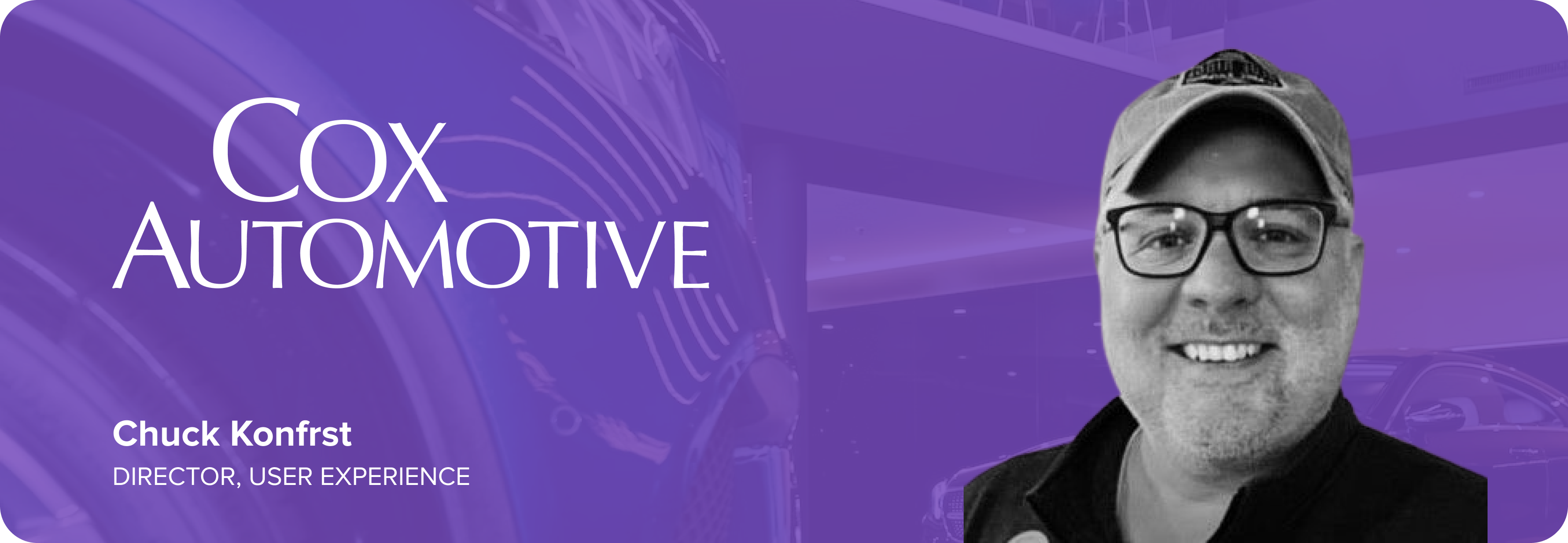


Executive Summary
Cox Automotive’s Manheim division is the world’s largest used vehicle marketplace, providing a Simulcast product that allows customers to bid in car auctions remotely.
Manheim understands that customers want to know as much as they can about a car before they make a purchase. As a result, Manheim made it a top priority to provide a great digital experience to their users. Eric Sorrels, Principal Developer, and Chuck Konfrst, Director of User Experience, brought in LogRocket to help them make it easier for users to access information about cars and speed up their time-to-resolution on user-reported issues.
With LogRocket, Manheim is able to build and ensure exceptional experiences for their digital-first users, by:
- Fixing user-reported issues faster, by being able to identify the root causes of user-reported issues within days, instead of weeks
- Improving product roadmap through a data-driven focus on the features that customers actually need and use
- Proactively finding impactful UX and Engineering issues before users report them, which enables the team to locate areas of risk and get ahead of user needs before they impact the business
- Better customer/user UX research at scale to adaptively respond to changing customer needs
Now, Manheim is able to solve frustrating issues before users ever notice them and build a roadmap focused on providing the best experience possible, instead of spending valuable time chasing survey participants or going back and forth with customers about their experience.
Fixing user-reported issues in hours, not weeks
Manheim Simulcast’s Engineering team first discovered a need for LogRocket after completing a large UI project. “Within a couple of weeks, we started hearing reports of users complaining about lag,” explained Eric. “Of course, we had no idea what they meant by that.”
The engineering team dove in, talking to their support team and some users. “They couldn’t explain it,” Eric said. It wasn’t possible to work with users during a session because there isn’t a way to monitor users’ process and discuss issues as they arose without interrupting the live bidding process, which is part of the workflow.
“We tried to recreate it ourselves, couldn’t do it, and we still had no idea what they were talking about,” Eric said. “We were dead in the water. We didn’t know how we were going to solve it.”
Weeks passed while the team sought a solution. After learning about LogRocket, Eric and his team implemented it on Simulcast.
Almost immediately, LogRocket session replays and technical data provided the technical context needed for Manheim engineers to understand the root causes of the “lag” their users were experiencing with a level of detail customers wouldn’t have been able to provide.
“I don’t know what we would do without LogRocket. Being able to see the logs, and the errors, and what users are doing has been invaluable.”
With LogRocket, Manheim’s problems essentially vanished — issues that previously took weeks to solve now take only hours. “We’re able to go in and see right away what’s going on, what the user was doing, what they were clicking on, what kind of errors were in the console.”
Furthermore, Manheim has set up dashboards in LogRocket to monitor Simulcast’s health and set notifications to alert them when things start to go wrong — before users report them. This, in turn, has boosted their users’ confidence in their Simulcast product, helping to ensure customers return to Manheim for future vehicle purchases.
“We have a bi-weekly performance meeting where we get together and we look at the application and see how it’s working in LogRocket. And we’ve created a bunch of dashboards that we go through and make sure everything is looking good there.”
This shift to proactivity also contributes to their goal of boosting their users’ efficiency. “Being able to see the logs, and the errors, and what they’re doing has been invaluable,” Eric said.
Improved product roadmap via product analytics
LogRocket has also helped Manheim make more confident decisions about how to right-size their product and efficiently manage engineering time by removing unnecessary and under-utilized features.
“We’ve gotten requests to expand certain features, and my team will be surprised that anyone’s actually using them,” Eric said. “So, we’ll go in and we’ll look at the popularity of the feature in LogRocket, how many people are clicking on it, how many people are using it.”
This has led to a huge shift in perspective. Because LogRocket allows Manheim engineers to quantify the value of particular features, they’ve boosted their efficiency and can target the issues that will deepen their users’ confidence, while excluding the issues and features that won’t.
“We’ve been able to say, ‘Only 2 percent of our customers are using this feature. Not only do we not need to do the work you’re suggesting, but we actually need to remove this feature because we don’t need to support it.’”
With such a big impact on their company goals, it was easy for Eric to see the value LogRocket could bring to other teams at Manheim. “We were so impressed after implementing it that we thought it might be helpful for other teams, so we began to get the word out.”
Gaining deeper customer insight — and fast — with LogRocket
Chuck Konfrst was Eric’s first stop after getting leadership buy-in. “One of our sayings internally is ‘how can we help dealers do what they need to in half the time?’” Chuck said.
The problem? “What customers tell you they’re doing and what they actually do are two different things,” echoing Eric’s concerns about reproducibility and what “lag” really meant.
Pre-LogRocket, this was typically where the UX team would conduct research that involved a lot of manual steps. “We had to reach out to clients, recruit them, schedule time with them, and then we’d have to sit with them on a call or in person — the recruiting process alone took weeks,” Chuck told us.
LogRocket sped up their research timelines and improved the quality of the information they gathered. Chuck and his team were able to view hundreds more user sessions than before, look more closely at how many users were able to complete certain functions in their conversion funnel, and organize their data by priority. “We went from weeks to get the information we needed, to hours or days, depending on how deep we went,” said Chuck.
The previous research process made it difficult to iterate and make improvements quickly, which resulted in longer lead times for new feature releases, regardless of the quality of information the users provided.
With LogRocket, those kinds of limitations basically didn’t exist.
“By watching what customers are doing, we can see where they’re pausing or having a challenge, and we can go into the metrics in LogRocket and see what error messages they might be having, or even just where they’re coming from.”
With a faster UX research process, Manheim can more easily deliver experiences that meet user needs, helping show users that their teams are prepared and willing to respond to their requirements quickly.
Better issue prioritization with LogRocket Galileo
Despite their success with LogRocket session replay, Manheim still faced another common problem: far more errors and alerts than the team could tackle. They needed a way to cut through the noise so they could focus their efforts on the most severe issues.
LogRocket Issues had helped Manheim aggregate and triage both technical errors and UX-related frustration issues across their application, which allowed them to prioritize. But they got a significant boost when they started using Galileo, LogRocket’s machine-learning algorithms trained on over a trillion digital interactions.
Galileo automatically prioritizes issues based on the severity of the impact on the user and the business. It alerts the Manheim team to only the issues that negatively affect their users, allowing them to focus precious engineering resources on solving the most important problems.
“By hand-delivering the highest-impact issues and their causes, LogRocket Galileo allowed us to make the most of limited time and resources,” Chuck said.
Uniting teams under one source of truth
With both teams working in one LogRocket instance, data points can be shared easily across teams to make faster decisions, validate (or invalidate) choices for moving forward with production, and ultimately, influence the Simulcast roadmap.
The confidence LogRocket provided to Engineering and UX now extends throughout Manheim. Manheim uses LogRocket to understand customers better, solve issues faster, analyze their apps to understand which features are most important, and prioritize their most pressing fixes.
With LogRocket Galileo, the team is able to see deeply into their product and how their customers are using it — not only to identify issues and fix them but also to understand the relative importance of every issue. This contributes to the roadmap and sprint planning prioritization in favor of making the greatest positive impact on user experience.
Both the engineering and UX teams have regained key development time to design and build new features that their users will love, which instill confidence in their digital experience and serve their customers. As the teams continue to work together and improve their cross-functional relationships, LogRocket remains a cornerstone around which all teams unite. “There’s great information there,” says Chuck. “It’s a treasure trove of stuff.”





